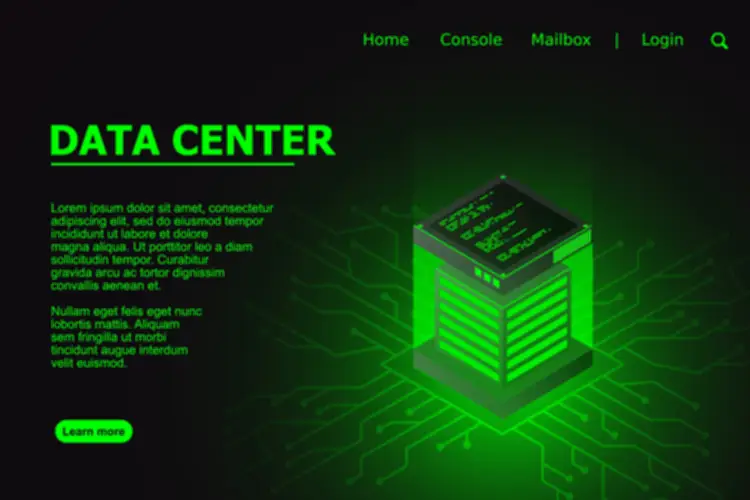If you, for instance Container Orchestration, need to make a very simple change to, say, the color of one of the buttons, in one part of your utility, you would want to redeploy the entire software with that change added in. In a microservices architecture you cut up this monolith into smaller, more manageable items. Kubernetes, Docker Swarm, and Apache Mesos went by way of the so-called “container orchestration war” through the early and mid-2010s. The race was on to determine which platform would turn into the business commonplace for managing containers. K8s “received” on the 29th of November 2017 when AWS introduced their Elastic Container Service for Kubernetes.
- One method to execute these tasks can be with a queue, but this methodology doesn’t scale properly.
- Kubernetes container orchestration refers to using the Kubernetes open supply platform to manage the container life cycle.
- In addition, containers enable functions to be run in an isolated style, making web-based functions much less vulnerable to infiltration and hacking.
- Controller nodes run a few Kubernetes components just like the API server, which is the “brain” of every little thing, and scheduler, which is answerable for scheduling containers.
The Role Of Kubernetes Container Orchestration

Orchestration software also must react to occasions or activities all through the process and make choices based mostly on outputs from one automated task to discover out and coordinate the next duties. The objective of orchestration is to streamline and optimize the execution of frequent, repeatable processes and thus to assist information teams extra simply manage advanced tasks and workflows. Anytime a course of is repeatable, and its duties may be automated, orchestration can be used to save lots of time, enhance effectivity, and remove redundancies. For example, you’ll be able to simplify knowledge and machine studying with jobs orchestration. Kubernetes also has an ever-expanding secure of usability and networking tools to boost its capabilities through the Kubernetes API. These embrace Knative, which allows containers to run as serverless workloads, and Istio, an open supply service mesh.
What Is Cloud Security Monitoring? Benefits, Challenges, And Finest Practices
More so, with its varied templates and prebuilt pictures, OpenShift allows you to create databases, frameworks, and other application services simply. As a end result, you get a highly optimized platform that standardizes production workflows, enables steady integration, and helps firms automate the administration of releases. As an added advantage, the Red Hat Marketplace lets you buy certified functions that may assist in a variety of areas, corresponding to billing, visibility, governance, and responsive assist. From there, the configuration files are handed over to the container orchestration device, which schedules the deployment. And these microservices make it easier to orchestrate services, together with deployment, storage, networking, and security.

What Container Orchestration Options Are Available?
Cloud orchestration is the method of automating the tasks that handle connections on non-public and public clouds. It also integrates automated tasks and processes right into a workflow that will help you carry out particular business capabilities. Google Kubernetes Engine is powered by Kubernetes and allows users to easily deploy, manage, and scale Docker containers on Google Cloud.
How Does Container Orchestration Work?
Meanwhile, nodes are the bodily or virtual machines that host the containers. The term cluster is often given to collections of nodes that work together to supply the assets wanted to run a single containerized utility. Finally, a cluster grasp or master node typically acts as a management level for a cluster. Container orchestration structure consists of operating container clusters throughout a quantity of machines and environments. Each cluster usually consists of a gaggle of nodes (also referred to as server instances). Users can manage and monitor containerized workloads with tools featuring application programming interfaces (APIs) and graphical consumer interfaces (GUIs).

Docker Swarm fully leverages the benefits of containers, permitting highly moveable and agile functions whereas offering redundancy to guarantee excessive availability in your applications. Swarm managers also assign workloads to probably the most applicable hosts, making certain proper load balancing of functions. While doing so, the Swarm Manager ensures proper scaling by adding and eradicating worker duties to help preserve a cluster’s desired state. In today’s competitive world, software program functions need to be quick and responsive.
The MongoDB Atlas Kubernetes Operator works a little differently to MongoDB’s different Kubernetes Operators. If your staff is acquainted with the technique of function flagging, finally you’ll find a way to reap the benefits of this same idea within your microservices workloads. Often, with homegrown or open-source characteristic flag administration systems, it might be difficult to orchestrate feature flags across a quantity of microservices as you have to construct that logic into the way you coordinate these changes. Say you want to disable this function across all the totally different services directly. With a homegrown system, it’s not unusual for builders to need to manually toggle a flag for a similar feature throughout every service.
As software program improvement continues to embrace the numerous benefits of containerized applications, container orchestration increasingly becomes a necessity. Kubernetes container orchestration refers to the usage of the Kubernetes open supply platform to manage the container life cycle. To better perceive how, let’s have a look at Kubernetes’s basic components and the way they work together.
Container orchestrators support using containers throughout totally different clouds, knowledge facilities, and environments. They provide tooling that allows you to consistently deploy your containers and then seamlessly roll out changes across all of your situations. Orchestrators substitute containers once they fail and can scale your functions mechanically or on demand.
Mesos does it in a means that works properly even when there are many resources out there directly however not all of sudden because some parts might require extra processing power than others do. Can be extra complex and dear to scale as a outcome of larger size and hardware useful resource requirements. Deployed individually by way of interfaces like Windows Admin Center or Hyper-V Manager, or in multiples utilizing instruments such as PowerShell. Provide full isolation from the host working system and different VMs, providing a stronger safety perimeter.
Google donated K8s to the Cloud Native Computing Foundation (CNCF) in 2015, after which the platform grew into the world’s hottest container orchestration tool. Multi-cloud is a cloud computing technique in which you rely on services from two or extra different third-party suppliers. Multi-cloud container orchestration is the use of a tool to handle containers that transfer throughout multi-cloud environments as a substitute of operating in a single infrastructure.
It’s designed to work equally properly across each public clouds and private information centers. Rancher centralizes Kubernetes access management, safety, and operations when you’re working with multiple clusters. You can create customers, roles, and tasks once, then use them throughout all of your clusters.
The configuration file tells the configuration management device where to seek out the container photographs, how to establish a network, and the place to store logs. Managing the lifecycle of containers with orchestration additionally helps DevOps teams who integrate it into steady integration and steady supply (CI/CD) workflows. Along with application programming interfaces (APIs) and DevOps groups, containerized microservices are the foundation for cloud-native purposes. It enables you to use one tool to handle each containerized cloud-native options and your legacy applications. Nomad can natively manage static binaries, traditional digital machines, and interactions with system instructions, all in one consistent workflow.
Kubernetes is able to help nearly any kind of utility, as lengthy as the correct configuration is used to make certain that the functions needs are met. This consists of, but is not restricted to, extremely stateful applications like databases and stateless deployments. As the load will peak right now, the app wants extra containers to have the power to service the additional number of requests. During non-peak hours, the identical variety of containers will not be required, hence these can be deleted. To solve this concern, we can break the applying right down to small providers for particular person options, every having their very own storage and computing power, and distributed throughout completely different servers.
Docker is a user-friendly container runtime that gives a set of instruments for creating containerized applications. It lets you package deal your code into a picture, which is then used to create a container. Therefore, Docker orchestration is a set of practices and applied sciences for managing Docker containers. Well, automating container orchestration allows you to scale applications with a single command, rapidly create new containerized functions to handle rising traffic, and simplify the set up course of. Containers are self-contained Linux-based applications or microservices bundled with all the libraries and functions they want to run on almost any sort of machine.
Transform Your Business With AI Software Development Solutions https://www.globalcloudteam.com/
